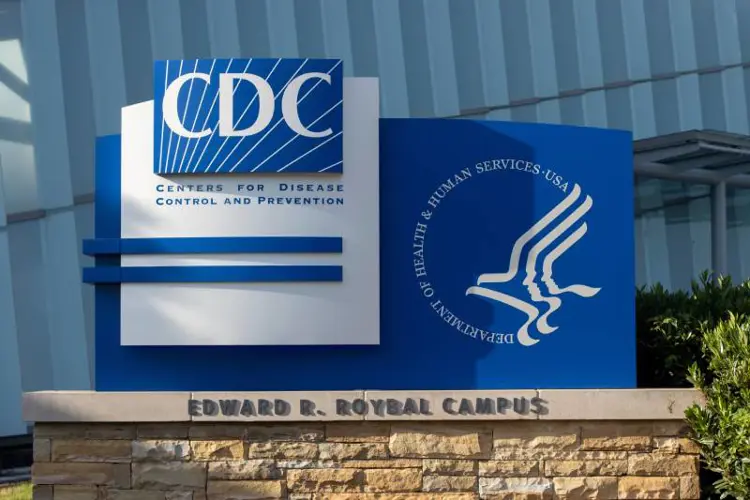Nicotine doesn’t cause cancer, but a majority of Americans believes it does. The idea that nicotine itself is harmful probably leads the public to fear and avoid low-risk nicotine products like e-cigarettes.
A new study offers alarming evidence that Americans misunderstand the relative safety of nicotine. More than half of adults (52.9 percent) think nicotine causes most of the cancer from smoking, and another 21.2 percent weren’t sure.
Almost as many cigarette smokers — 52.5 percent — think nicotine is a carcinogen. That means they may be unlikely to use vaping products, or even nicotine replacement therapy products like gum and patches, since they may believe those products aren’t any safer than smoking.
The study reflects that concern too. Only 31.6 percent of the surveyed smokers agreed that e-cigarettes are less harmful than smoking cigarettes. And a miniscule 3.4 percent believe vapes are much less harmful. Even vapers are misinformed, although less so as a group than smokers and non-smokers. The study found that 14.6 percent of vapers believe that nicotine causes cancer.
Only 31.6 percent of the surveyed smokers agreed that e-cigarettes are less harmful than smoking cigarettes.
The study comes from PinneyAssociates, a Washington, D.C.-area consulting firm. The findings were presented last month at the Society for Research on Nicotine and Tobacco (SRNT) annual meeting in Baltimore. It hasn’t yet been published. Pinney researchers analyzed data from the National Cancer Institute’s Health Information National Trends Survey to arrive at their conclusions.
"That adults' misperceptions about the health effects of nicotine persist despite the long-term availability of FDA-approved over-the-counter nicotine replacement products is troubling and needs to be addressed with clear communications to the public — especially smokers — that nicotine is not what is causing smoking-related disease," said lead author Karen K. Gerlach, Ph.D., in a press release.
"Leading public health experts have called for trusted authorities to communicate clearly about nicotine to smokers,” she added, “which should help them understand that there is a continuum of risk across nicotine-containing products and use that understanding to help them reduce risks to their health."
But trusted authorities aren’t communicating the real risks of using non-combustible nicotine products. The possibility that nicotine affects adolescent brain development — based on nothing but rodent behavioral studies — is regularly trumpeted as a reason to carefully control vapor products, even by officials who are medical doctors like FDA Commissioner Scott Gottlieb.
Will the FDA exploit teen nicotine fears to ban flavors?
Recent FDA statements suggest that the FDA may use the questionable science on nicotine risks to seek further restrictions on vaping products. A likely target is flavored e-liquid, which Gottlieb and others claim particularly appeals to youth. The FDA intended to ban flavors as part of the 2016 Deeming Rule. That ban was kept out of the final version of the regulations during review by the Obama White House’s Office of Management and Budget.
“Protecting future generations from all nicotine-containing products remains a top priority,” Gottlieb tweeted in February. “#FDA’s efforts seek to restrict youth access, limit youth appeal. We’ve also expanded public education efforts to include messaging re: dangers of youth use of e-cigarettes.”
That will mean another FDA war with American vapers, since flavored e-liquid, for the most part, is the independent vaping industry.
The FDA is currently preparing an Advanced Notice of Proposed Rulemaking (ANPRM) that will ask for public comment on regulation of flavors. In the draft version of the ANPRM, the FDA specifically mentions evidence that flavors supposedly appeal especially to kids.
“Certain flavors are generally recognized as appealing to youth, such as gummy bear and cotton candy, while others, such as coffee and cinnamon, may not be as obvious,” says the draft ANPRM document. “In this notice, FDA would request information on how best to regulate flavors in tobacco products to limit appeal to youth and prevent youth initiation and use of tobacco products.”
If flavored e-liquid appeals to youth, and it’s important to prevent youth vaping, obviously it follows that the “best” way for the FDA to regulate vapes to prevent youth uptake will be to restrict flavors. That will mean another FDA war with American vapers, since flavored e-liquid, for the most part, is the independent vaping industry.
The Freemax REXA PRO and REXA SMART are highly advanced pod vapes, offering seemingly endless features, beautiful touchscreens, and new DUOMAX pods.
The OXVA XLIM Pro 2 DNA is powered by a custom-made Evolv DNA chipset, offering a Replay function and dry hit protection. Read our review to find out more.
The SKE Bar is a 2 mL replaceable pod vape with a 500 mAh battery, a 1.2-ohm mesh coil, and 35 flavors to choose from in 2% nicotine.
Because of declining cigarette sales, state governments in the U.S. and countries around the world are looking to vapor products as a new source of tax revenue.
The legal age to buy e-cigarettes and other vaping products varies around the world. The United States recently changed the legal minimum sales age to 21.
A list of vaping product flavor bans and online sales bans in the United States, and sales and possession bans in other countries.


















